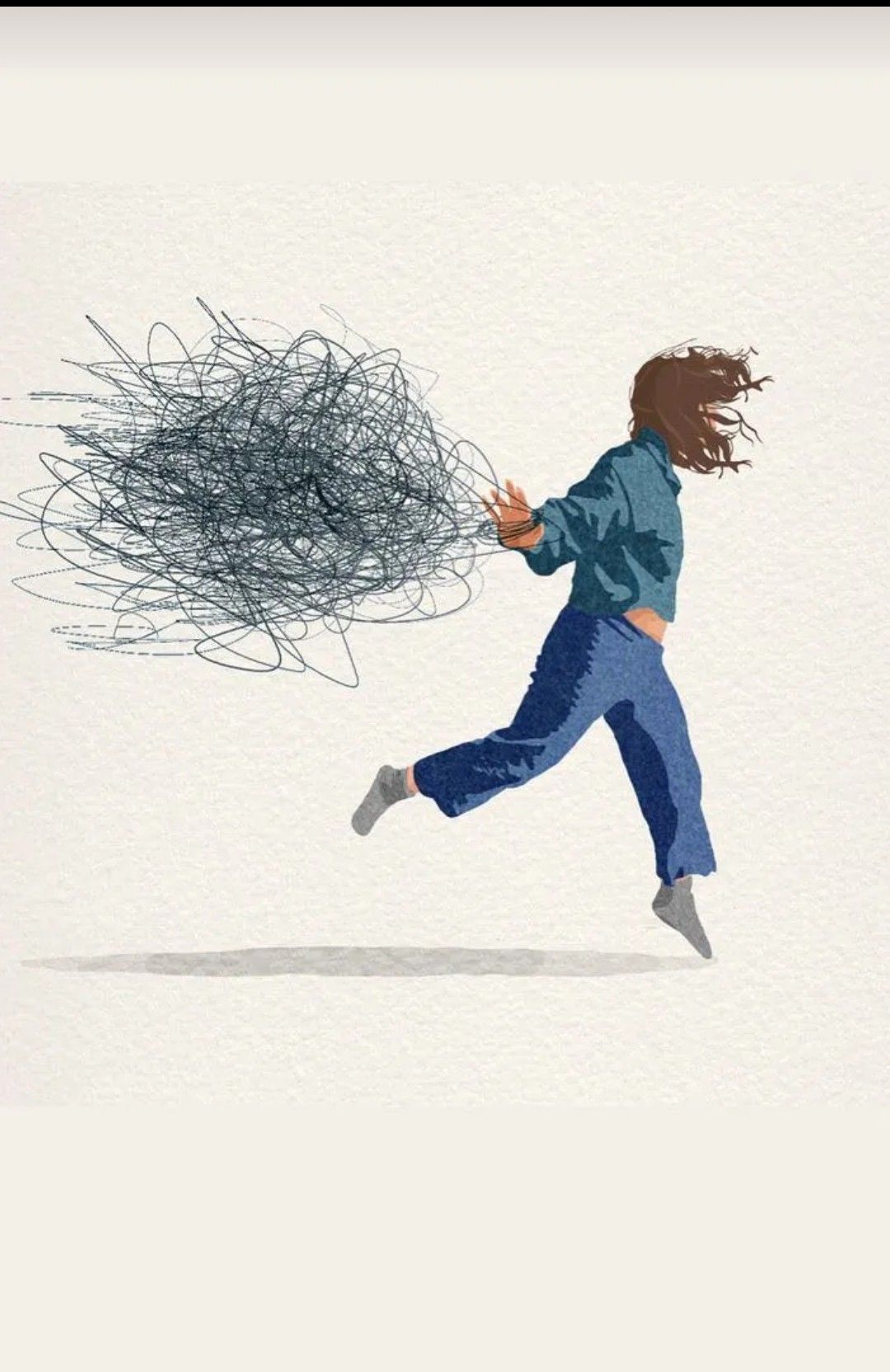Rewriting Your Story: 7 Steps to Break Painful Patterns
Ever feel like you’re stuck in a loop, repeating the same painful reactions or habits, even when you desperately want to stop? That gut-wrenching feeling of “Oh no, not again,” or the quiet exhaustion of trying to change but falling back into familiar traps? You’re definitely not alone. It’s an incredibly common human experience to find yourself caught in cycles that hold you back, causing distress and preventing you from living the life you truly want. Whether it’s a knee-jerk emotional response, a procrastination habit, or a pattern in your relationships that just keeps repeating, the frustration can be immense.
The truth is, this struggle is real, and the pain associated with these patterns can be deeply impactful, affecting your self-worth, your connections, and your overall well-being. But here’s the powerful, hopeful truth: you absolutely can break free. This isn’t about being perfect overnight – it’s about making genuine progress, one conscious choice and one brave step at a time. This post is your guide to understanding why we get stuck and how to gently, yet powerfully, start building new, healthier paths for yourself.
Why We Get Stuck in the Loop
So, if these patterns cause us pain, why do we keep doing them? It’s a question many of us ponder on. Often, these patterns are like old, comfy, but ultimately worn-out shoes. They’re incredibly familiar, and there’s a certain (misplaced) comfort in predictability, even if that predictability leads to painful outcomes. Our brain is wired for efficiency, and it loves to create shortcuts based on our past experiences. When you react the same way repeatedly, your brain builds a strong “pathway” for that reaction, almost like a default setting, which then becomes an automatic, unconscious response, almost like your personal autopilot.
These patterns aren’t a sign of weakness, they’re simply how you’ve learned to cope, respond, and navigate the world based on your unique history. Maybe you learned to avoid conflict to keep the peace, or to people-please to feel accepted, or to lash out when you felt threatened. These strategies might have served a purpose at some point, perhaps even protected you. However, when they stop serving you and start causing pain, that’s when it’s time for a compassionate re-evaluation. You need to recognize that this isn’t about blaming yourself for the past, but about dissolving the hidden strings that might still be pulling you, even today.

7 Steps to Breaking Painful Patterns
Ready to start untangling those strings and stepping into something new? This journey requires patience and kindness towards yourself, but it’s incredibly rewarding. Here are 7 practical steps that have truly helped me and countless others navigate this path towards breaking free:
1. Spot the Pattern (Get Curious, Not Critical)
This is the foundational step. You can’t change what you don’t fully see. Begin by simply noticing the pattern as it happens. What specific thoughts, feelings, or situations consistently lead you to this behavior?
For example, if your pattern is procrastination, observe when it kicks in, what thoughts accompany it (“I can’t do this,” “It’s too hard”), and how your body feels. If it’s snapping at loved ones, note the specific triggers: stress from work, feeling unheard, lack of sleep. Think of yourself as a curious detective gathering clues, not a judge making a verdict. This observation needs to be gentle and non-judgmental, the goal is just awareness, not immediate fixing.
2. Understand Its Roots (A Little Digging Helps)
Once you’ve spotted the pattern, take a moment to gently ask “why?” It’s not about dwelling on the past, but about gaining insight. Did this pattern start when you were a child as a way to feel safe, loved or heard? Did you learn it from watching others?
For instance, if you constantly overthink and worry, maybe you grew up in an unpredictable environment where hyper-vigilance felt necessary. Understanding the origin can help you realize that the pattern, while perhaps once useful, is now outdated. This realization can be incredibly freeing because it helps you detach from the pattern, seeing it as an old coping mechanism rather than an inherent part of who you are. It signals your mind that you hold the power to disassociate and change it.
3. Find Your “Pause” Button (Create Space to Choose)
This is where you start to actively disrupt the autopilot. Before you automatically react, can you create a tiny, conscious pause? This might involve physically taking a deep breath, counting slowly to five, stepping away from the situation for a minute, or even just mentally saying “Stop!” to yourself.
That brief moment of stillness creates a crucial space – a tiny window where you can choose a different response instead of falling back into the old, ingrained pattern. It’s in this powerful pause that you reclaim your authority and decide to steer your own ship. The more you practice this pause, the stronger that window of choice becomes.
4. Try a Tiny Tweak (Small Steps, Big Impact)
Breaking a pattern doesn’t mean you have to suddenly become a completely different person overnight. That’s overwhelming! Instead, focus on making one tiny, manageable tweak this time. If your pattern is to immediately say “yes” to every request, try saying, “Let me check my schedule and get back to you.” If you usually get overwhelmed by a big task and avoid it, commit to working on it for just 15 minutes.
Small wins are incredibly powerful because they build momentum – prove to your brain that change is possible, and build confidence along the way. Each tiny successful tweak is a step towards rewiring those old, painful pathways with new, healthier ones.
5. Practice Self-Compassion (Be Your Own Best Friend)
This step is non-negotiable. Breaking patterns is a messy, imperfect process where there are high chances that you will slip up and you will fall back into old habits sometimes, and that is absolutely okay and totally normal. When you do, don’t beat yourself up or fall into a shame spiral.
Instead, treat yourself with the same kindness, understanding, and encouragement you’d offer a dear friend. Say to yourself, “Okay, that happened. What can I learn from it? How can I support myself now?” Self-criticism is actually counterproductive, it depletes your energy and makes it harder to try again. Compassion, on the other hand, empowers you to get back on track faster and with more resilience.
6. Build a Support Squad (You Don’t Have to Do It Alone)
You don’t need to navigate this journey in isolation. Share your intentions and struggles with someone you trust – maybe a supportive friend, a family member, a mentor or your therapist. Having someone who can cheer you on, offer an outside perspective, or simply listen without judgment can make a huge difference.
Sometimes, just articulating your pattern out loud to another person helps you see it more clearly and find solutions you hadn’t considered. Whether it’s a casual chat or professional guidance, building a support system provides invaluable encouragement and accountability.
7. Celebrate Every Step (Acknowledge Your Progress)
No matter how small the shift, acknowledge your effort and celebrate your wins! Did you manage to pause for a breath? Did you respond differently even once? Did you pick yourself up after a mistake instead of giving up? Celebrate those victories!
Our brain loves rewards, and positive reinforcement helps solidify new behaviors. Celebrating your conscious choices builds new, positive pathways in your brain, reinforcing the idea that change is not only possible but also deeply rewarding. Every conscious choice you make to break away from an old pattern is a victory that builds your strength and lights the way to true freedom.

Breaking painful patterns is a profound journey of self-discovery and growth. It’s about slowly, bravely, creating new paths that lead to more peace, joy and authenticity in your life. You have the inherent power within you to rewrite your story, one mindful choice and one compassionate step at a time. This path leads to a richer, more fulfilling existence where you are truly the author of your own days. So, what’s one small step you will take today to move closer to your freedom?


